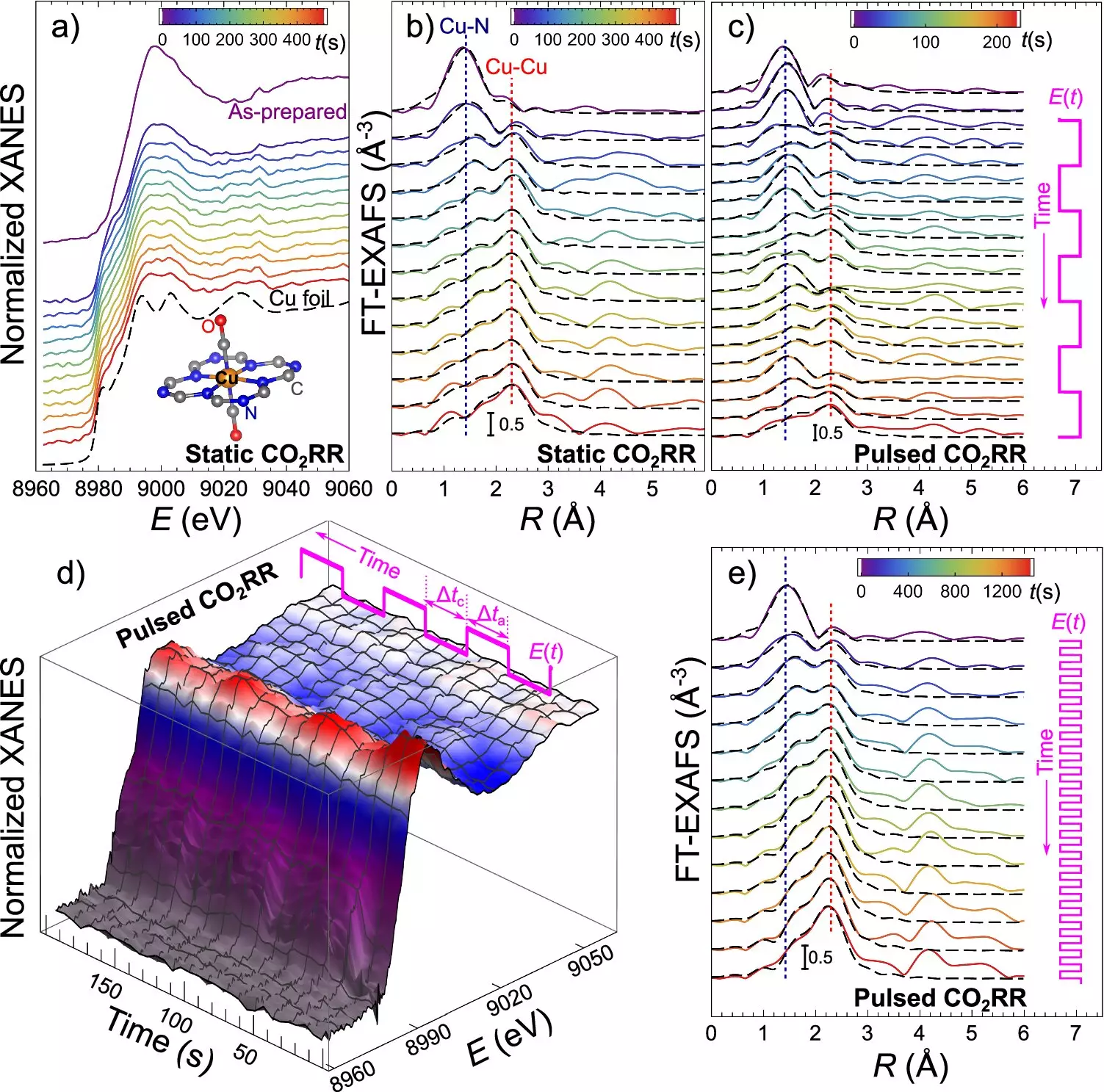In a recent study published in Nature Communications, researchers from the Interface Science Department at the Fritz Haber Institute have put forth a groundbreaking advancement in the realm of climate change mitigation. The study titled “Reversible metal cluster formation on Nitrogen-doped carbon controlling electrocatalyst particle size with subnanometer accuracy” delves into a new method for comprehending the mechanisms of carbon dioxide (CO2) re-utilization, leading to the production of fuels and chemicals. This discovery marks a significant step towards the optimization of catalytic processes driven by renewable energy sources.
At the core of this research lies the fascinating properties of catalysts containing ultradispersed copper and nitrogen atoms embedded in carbon. These catalysts exhibit a unique ability to transition from single atoms of copper to small clusters and nanoparticles of metal during the electrocatalytic CO2 reduction (CO2RR) process. The reversible nature of this transformation, controlled by the applied electrical potential, plays a pivotal role in determining the structure of the catalyst and subsequently influencing the outcome of the CO2RR process.
One of the key challenges in scaling up CO2RR technology for practical applications has been the broad distribution of reaction products, impeding the efficient production of specific chemicals and fuels. However, this research introduces a method to precisely manipulate the distribution of CO2RR products by fine-tuning the catalyst’s state. By employing alternating electrical pulses, researchers can regulate the size and structure of catalyst particles, thereby enhancing the selectivity of the reaction towards desired products.
The study elucidates that different forms of the catalyst are adept at producing distinct CO2RR products. Single copper atoms excel in hydrogen production, small clusters are favorable for methane production, and larger nanoparticles are ideal for ethylene production. By monitoring and adjusting the catalyst’s transformation in real-time using operando quick X-ray absorption spectroscopy, researchers can ensure optimal conditions for the generation of specific CO2RR products.
This research not only deepens our understanding of catalyst behavior and structural transformations during operations but also sheds light on the intricacies of the CO2 reduction reaction. By demonstrating how control over the catalyst’s structure can impact the process, the study opens up pathways for technological applications in greenhouse gas reduction, as well as the production of sustainable chemicals and fuels. Overall, this work signifies a significant advancement in scientific inquiry, paving the way for future breakthroughs in the field of CO2 electroreduction catalysts.


Leave a Reply